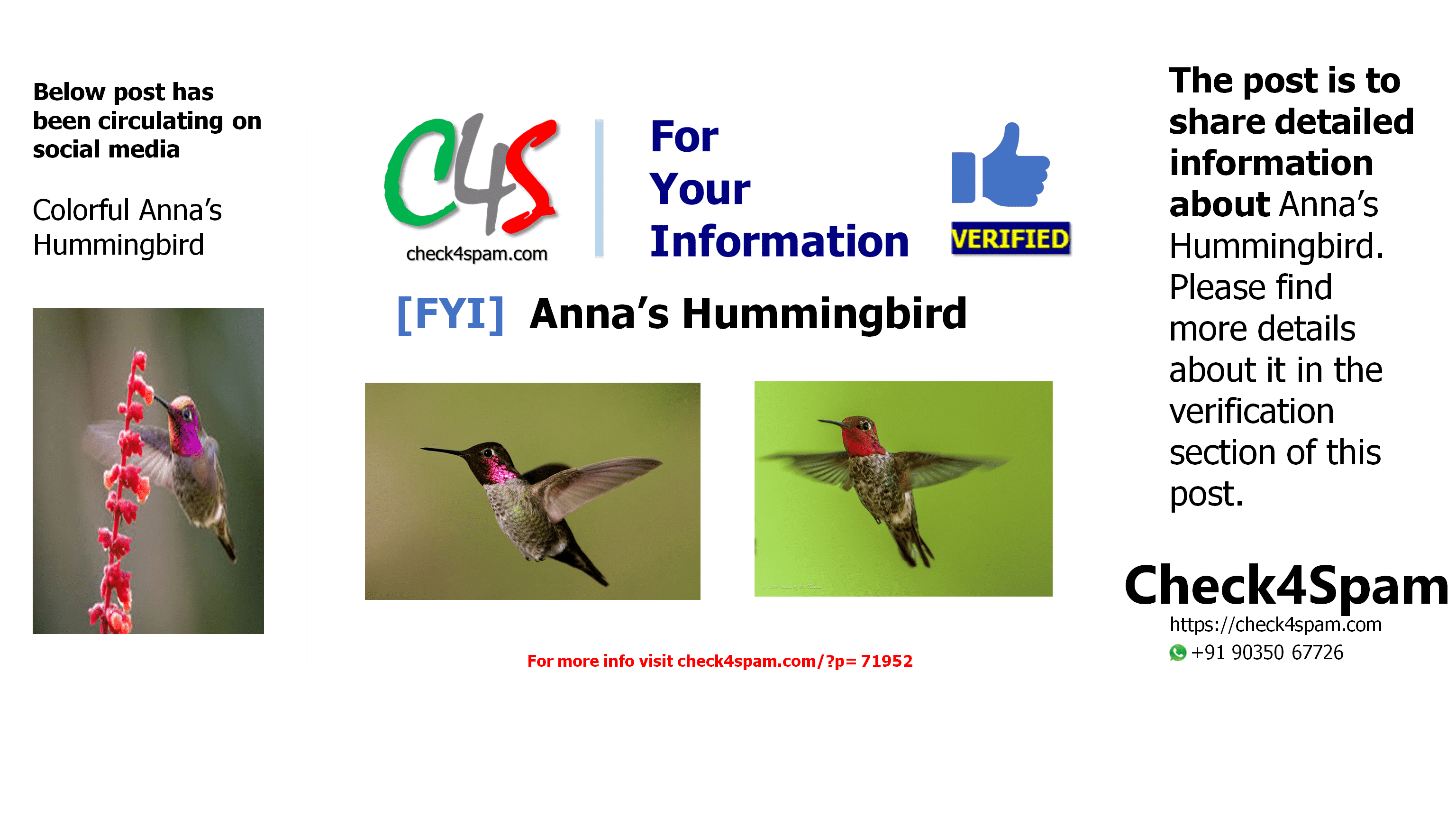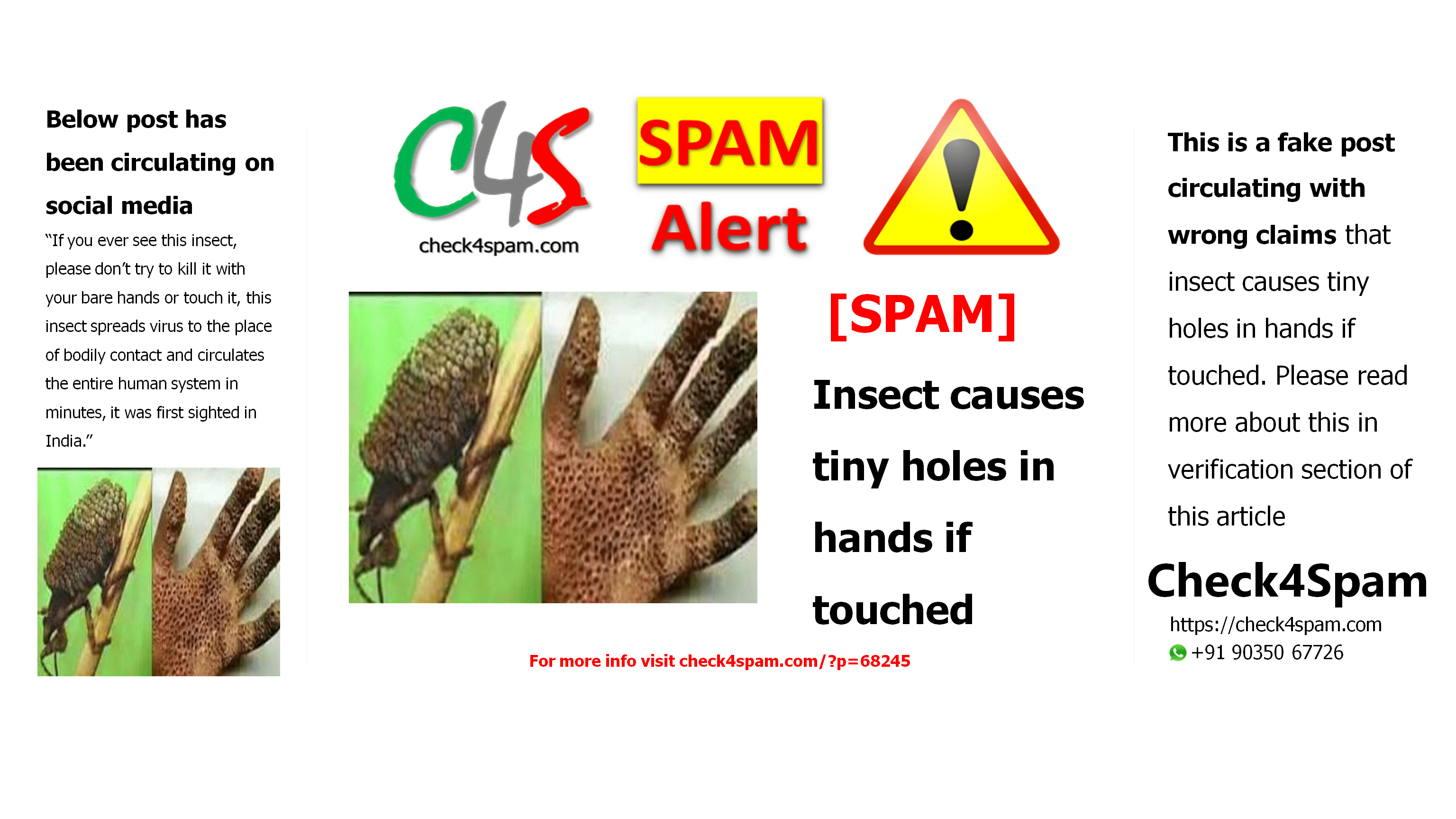[FYI] Anna’s Hummingbird
The post is shared to give information about Anna’s Hummingbird
Post Information:
The below post has been circulating on social media.
https://youtu.be/piPbG-YPl-g
Verification: Anna’s Hummingbird is a colorful creature, native to the west coast of North America
Habitat:
The creature is so beautiful that one can’t take eyes off it. Anna’s Hummingbird is a native of the west coast of North America. It’s a type of broad-tailed Hummingbird with the scientific name Selasphorus Platycercus. It has an iridescent (displaying a spectrum of colors that shimmer and change due to interference and scattering as the observer’s position changes) bronze-green back, a pale grey chest and belly, and green flanks. Anna’s Hummingbird wings beat about 40-50 times per second in a normal flight. 30% of a hummingbird’s weight consists of flight muscles.
Hummingbirds fly about 25 mph in a normal flight and up to 40mph in a courtship dive. The heart beats about 250 times per minute while at rest, about 1,220 per minute while flying, but slows to 50 beats per minute at night. It takes about 250 breaths per minute while at rest. A hummingbird has a mass of about 3-4g. A tiny hummingbird can consume up to 50% of its weight in nectar each day. Anna’s Hummingbird is the only hummingbird regularly seen in winter along the West Coast.
Food:
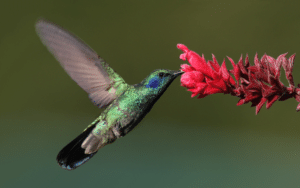
These birds feed on nectar from flowering plants such as including currant, gooseberry, manzanita, and eucalyptus using a long extendable tongue. A PBS documentary shows how Anna’s hummingbirds eat nectar from many. They also eat a wide array of insects from understory leaves, crevices, streambanks, or caught in spider webs, plucked from the air, or taken from flowers. Primarily they target smaller insects, like midges, whiteflies, and leafhoppers.
Nesting:
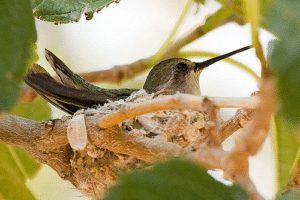

Females choose the nest area, usually a horizontal branch of trees or shrubs 6-20 feet off the ground near a place where the nectar is easily available. Mostly they build nests in oak, sycamore, or eucalyptus trees, but they may use vines, shrubs, or even poison oak. The female builds the nest out of the dried plants and spider webs. They sit in the nest and build the cup rim around her. Nests take around a week to build and are 1 inch tall and 1.5 inches in diameter. They may be built of cattail, willow, leaves, thistle, or small feathers and bind them together by spider webs or insect cocoons. They may decorate their nests from outside with lichens, mosses, or paint chips. They sometimes steal these from other active nests. The female is responsible for the construction of the nest and the care of the young. The breeding season begins in December and usually lasts until May or June. Females will lay a clutch of only two white eggs and will produce only one brood per season. The hummingbird eggs are roughly the size and shape of a small jellybean. The hatchlings will remain in the nest for three weeks.
Behavior:
A hummingbird can rotate each of its wings in a circle. This is the only bird that can fly in all directions. To hover, they move their wings forward and backward in a repeated figure eight like the arm movement in swimming. They can move instantaneously in any direction, start from their perch at full speed, and don’t necessarily slow up to land. They can even fly short distances upside down. When attacked by another bird, they apply the rollover trick.
Laws about Hummingbirds:
Basically, it is illegal in the United States to hold a hummingbird, a hummingbird nest, a hummingbird baby, or any part of a hummingbird, nest, or egg, in any type of captivity in any way, shape, or form. This means that unless you have a valid permit, it is illegal to trap, band, hold, harass, or control any hummingbird or any part of the hummingbird, nest, or egg. Read more
Hummingbirds are special—brilliant, tiny, precision-flying creatures that glitter like jewels in the sun and dazzle with their aerial acrobatics, flying fast then stopping instantly, hovering, and zipping up, down, or backward with exquisite control.
Four kinds are most commonly seen at backyard feeders:
1. Ruby-throated Hummingbirds

2. Black-chinned Hummingbirds
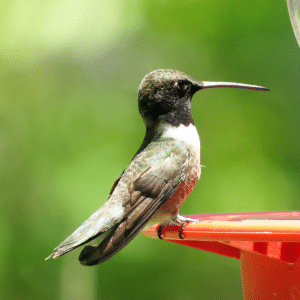
3. Anna’s Hummingbirds
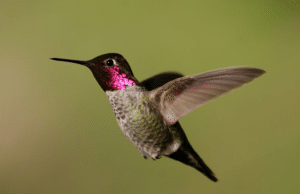
4. Rufous Hummingbirds

Various hoax floating around taking this Anna’s Hummingbird in context. The Anna”s Hummingbird videos circulate with a lot of false claims about its name (as Surakav), its cost and the number of photographers, and the time taken to capture the bird. Not only in India but in various countries the video is viral. Nothing is true except the different colors that the viewer witness due to the angle of its view. Read more
Post Date: 4 April 2019
Post ID: #71952

